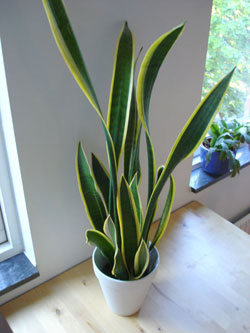Choosing a container for houseplants should meet plant needs and be a decorative style element in your home. The container can be a traditional ceramic, plastic or clay pot which has been designed for plants, or it can be a nontraditional container such as old mugs, teapots, jars and other thrift store finds. Select a container that is one or two inches in diameter larger than the root ball of the plant. Ideal containers have drainage holes that allow the excess water to drain out of the bottom. Placing a layer of gravel or broken pot shards in the bottom of the pot will allow for more drainage so roots do not become waterlogged and rot.
Decorative containers often do not have drainage holes, so it may be necessary to double-pot your plant. Double potting allows you to enjoy a decorative container while providing proper drainage for your plant. When double potting, put a small amount of gravel in the bottom of the decorative container and place the clay or  plastic container which has drainage holes inside.
plastic container which has drainage holes inside.
Porous clay pots allow more air to reach plant roots than plastic or ceramic containers, but have a tendency to dry out the potting mix faster, requiring water more often. They also may show stains from salts which have leached from soil and fertilizer. If reusing containers, thoroughly clean the inside so that soil pathogens or salts that have adhered to the pot will not affect the new plant’s growth.
When using tall, narrow pots, you’ll need to use a finer textured soil to maintain even moisture than when using short, wide pots. Larger pots may require less frequent watering. Decorative baskets may also be used, but you’ll need to use a plastic liner to protect the basket. Plastic or ceramic saucers are needed for all containers with drainage holes to protect furniture and floors.
Select containers according to plant type. For example, cacti, succulents, orchids and bromeliads may do better in unglazed clay or terra cotta containers while moisture-loving plants, like Boston fern, grow well in plastic containers or ceramic containers. For large plants, light-weight plastic containers may be a smart choice. Glazed clay, wire with peat moss baskets, and wooden containers are also available. Avoid treated wood containers because they may affect plant growth and viability.
For information on repotting houseplants, please see the following PlantTalk script:
For more information, see the following Planttalk Colorado™ video(s).



